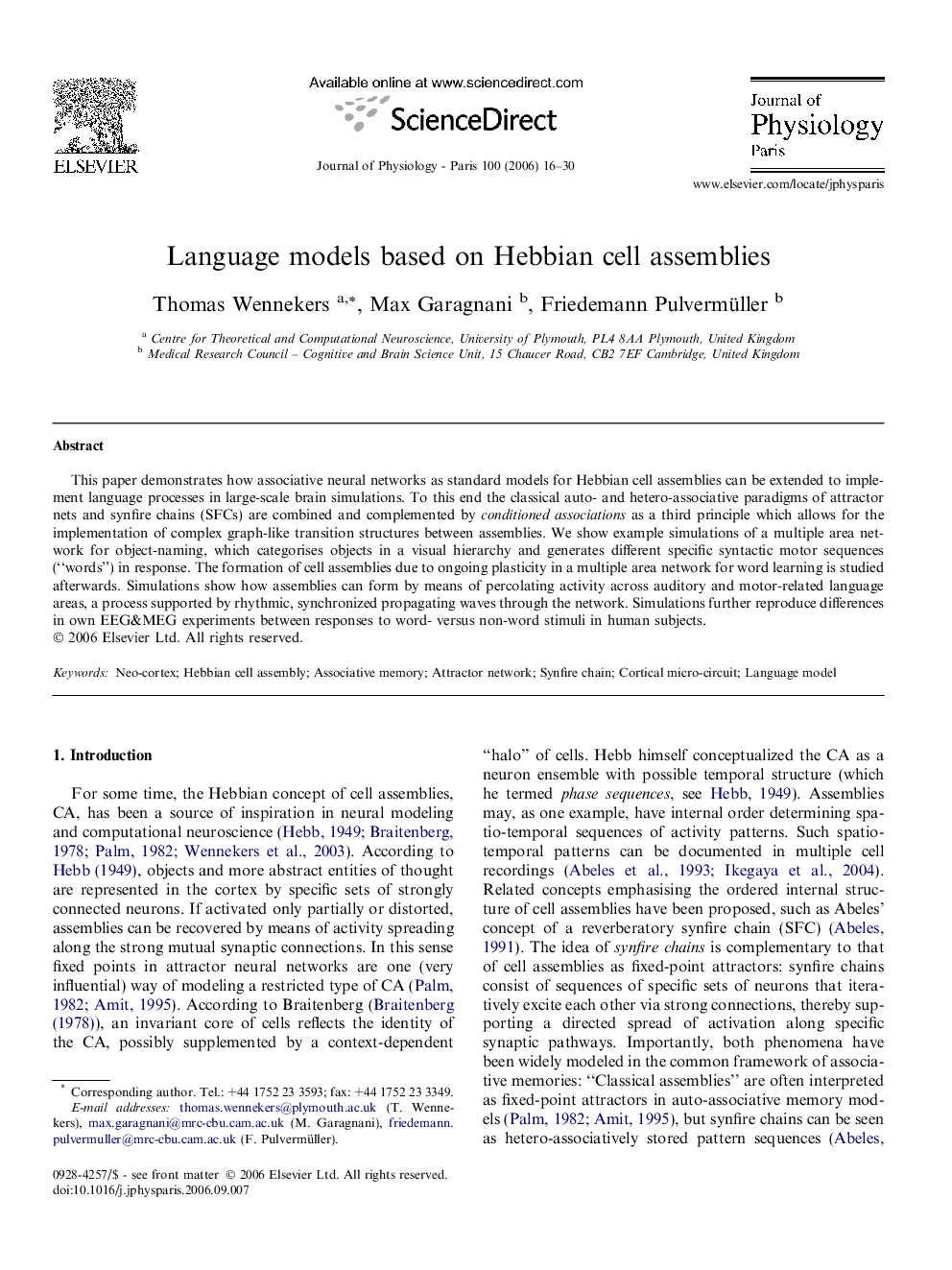| Article ID | Journal | Published Year | Pages | File Type |
|---|---|---|---|---|
| 2842430 | Journal of Physiology-Paris | 2006 | 15 Pages |
This paper demonstrates how associative neural networks as standard models for Hebbian cell assemblies can be extended to implement language processes in large-scale brain simulations. To this end the classical auto- and hetero-associative paradigms of attractor nets and synfire chains (SFCs) are combined and complemented by conditioned associations as a third principle which allows for the implementation of complex graph-like transition structures between assemblies. We show example simulations of a multiple area network for object-naming, which categorises objects in a visual hierarchy and generates different specific syntactic motor sequences (“words”) in response. The formation of cell assemblies due to ongoing plasticity in a multiple area network for word learning is studied afterwards. Simulations show how assemblies can form by means of percolating activity across auditory and motor-related language areas, a process supported by rhythmic, synchronized propagating waves through the network. Simulations further reproduce differences in own EEG&MEG experiments between responses to word- versus non-word stimuli in human subjects.
